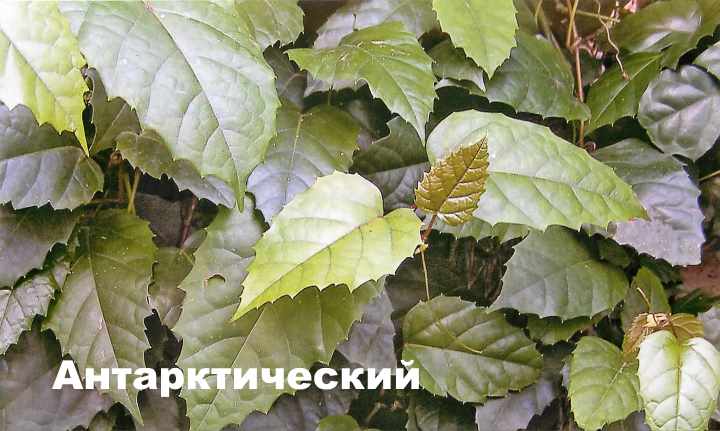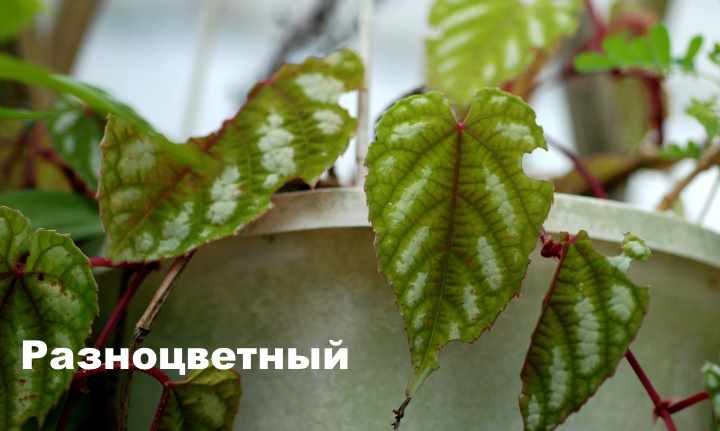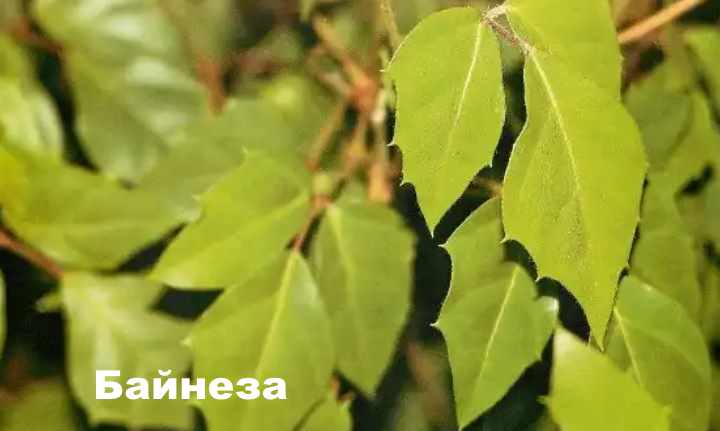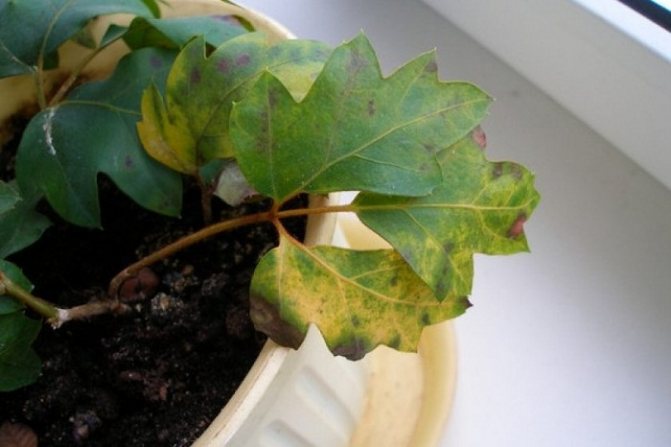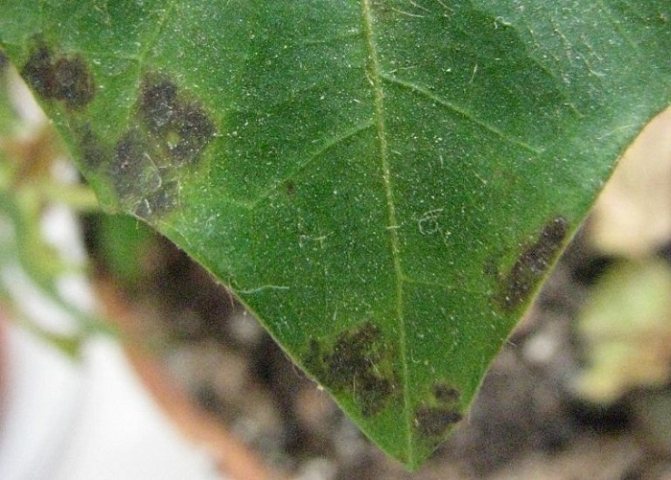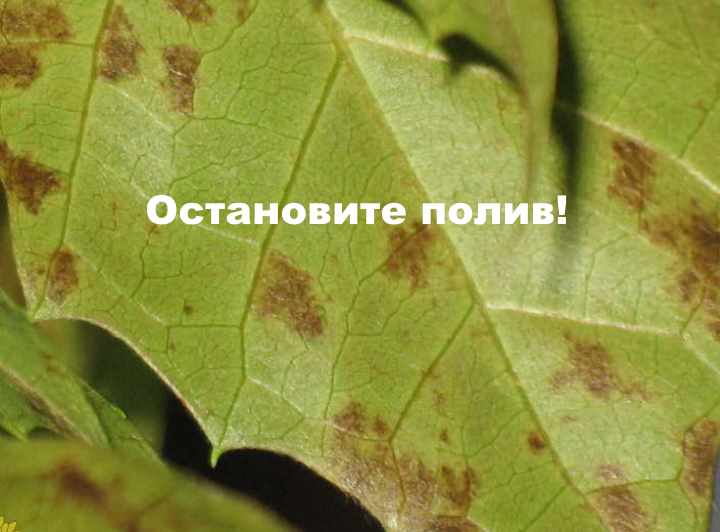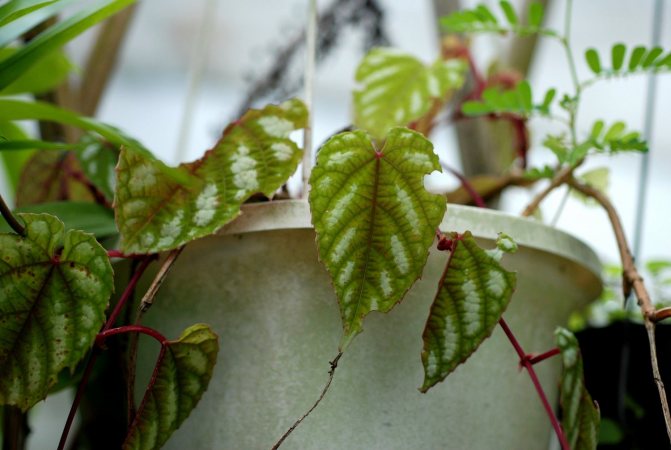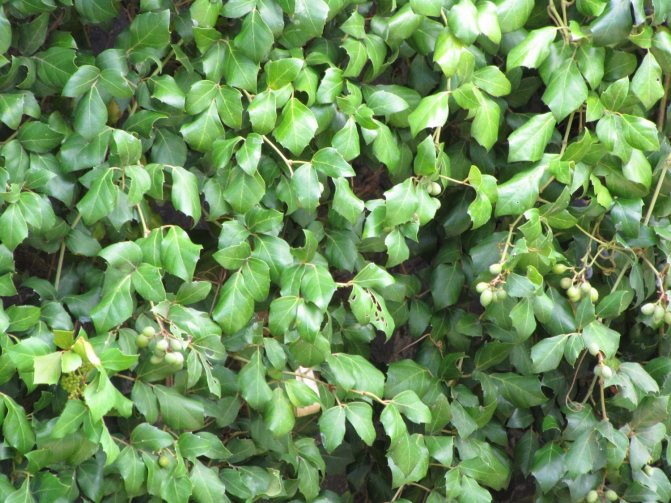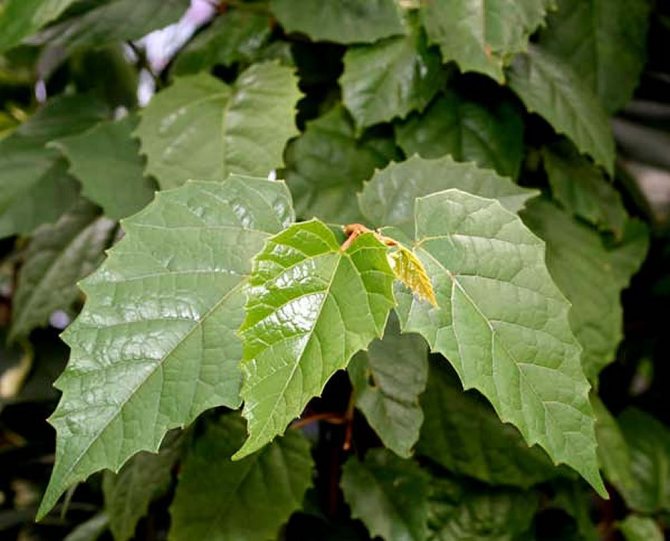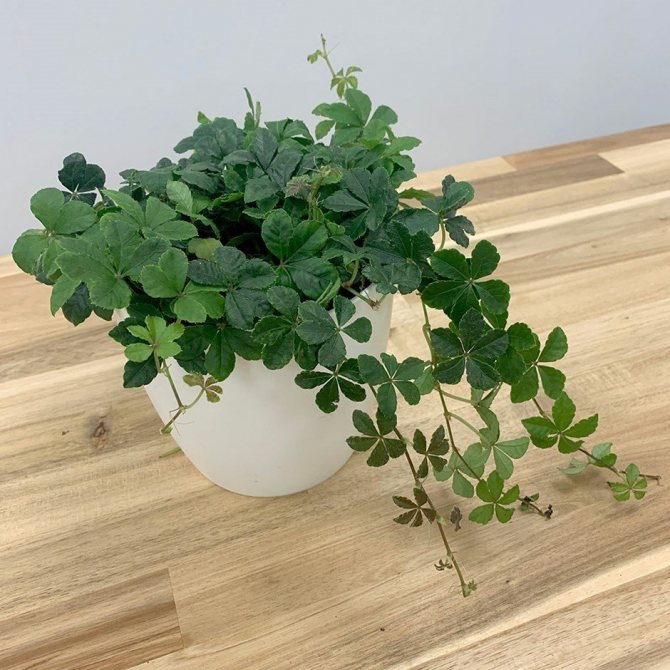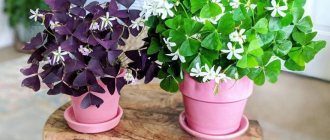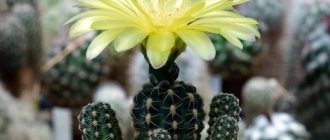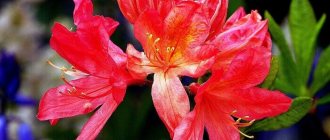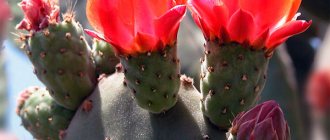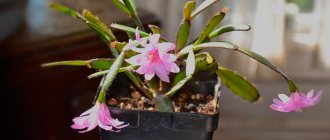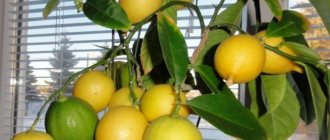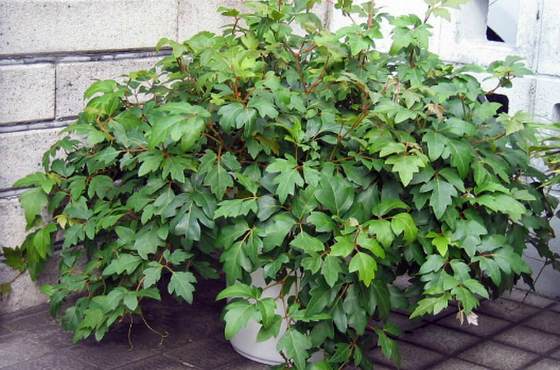
Cissus is a popular houseplant due to its ease of maintenance. It has several more names: indoor grapes and indoor birch. In total, there are about 300 species of cissus.
The most common ones are:
- rhomboid;
- Antarctic;
- quadrangular;
- multi-colored (tricolor).
This plant is grown mainly because of the ornamental leaves. It blooms quite rarely and inconspicuously, but its leaves are really beautiful.
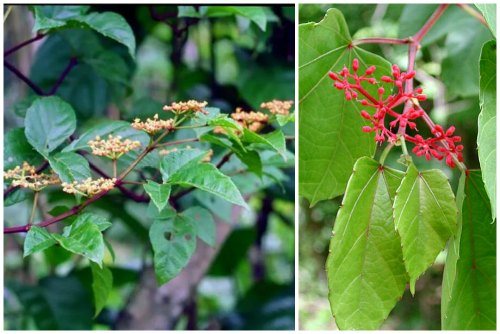

Cissus is planted most often in hanging pots, forming a cascading waterfall of leaves. In the photo you can see all the beauty of this plant. Thanks to him, you can perfectly green your apartment, office, study.


It is often planted in large halls of hospitals, schools, kindergartens and other public institutions. But even at home, indoor cissus feels great, even a novice florist can cope with the cultivation of this ornamental plant.
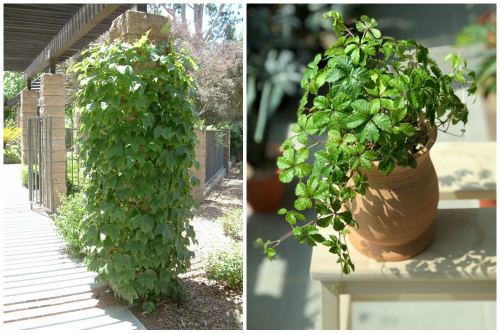

Propagation of cissus by cuttings
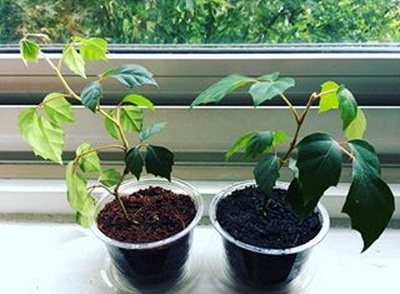

How to cut cissus photo
At home, cissus is most often propagated vegetatively (by cuttings, dividing the bush).
- Cut apical cuttings 10-15 cm long, with at least 2 growth buds, at any time of the year.
- Root in water with a rooting agent at an air temperature of about 18 ° C or in a sandy-peat mixture, covered with a jar or cut plastic bottle.
- In the latter case, keep the air temperature within 22-24 ° C, ventilate daily, periodically moisten the soil.
- Transplant the rooted cutting into a separate container with soil for mature plants.
How to cut and propagate cissus by cuttings, the video will tell:
Questions and answers
- How to properly grow cissus in a flower pot?
If the plant is grown as an ampelous plant, the length of the branches should not exceed 50 cm so that the bush is compact and lush. Long shoots are pruned annually by 1/3. An additional formation of the bush is carried out so that it is lush and beautiful.
- Cissus grows poorly, turns yellow, and its leaves fall off?
The flower is adversely affected by cold drafts, a sharp temperature drop. It is necessary to create more favorable conditions for the plant.
- Are the leaves shrinking and the tips dry?
This indicates a lack of air humidity. The plant must be constantly sprayed.
Growing cissus from seeds


Seeds of cissus quadrangular photo
Cissus antarctic and quadrangular can be propagated by seeds. Sow in pots with loose soil in the spring. Moisten, cover crops with foil. Ventilate daily, spray the soil periodically. At the stage when 2 true leaves appear, plant them in separate containers with a diameter of no more than 7 cm.
To make the bush more lush, you can immediately plant 2-3 young plants in one pot. The capacity should not be large - cissus grows better in cramped conditions.
How to transplant cissus
Young plants (up to the age of 3 years) need an annual transplant, then replant every 3-4 years. For mature plants, replace the topsoil with a new one (5-8 cm thick). Perform all procedures in early spring.
Transfer along with an earthen lump: remove the plant from the pot, move it to a new container of slightly larger diameter, add fresh earth.
If the roots are rotten, they need to be cut off, treated with a fungicide, in this case, replace the soil completely.
Be sure to lay a drainage layer at the bottom of the pot, consisting of expanded clay, pebbles. So the water will not stagnate at the bottom, which will save the plant from decay. The drain should take up 1/5 of the capacity.
The plant requires a loose, air and permeable soil of a neutral reaction. You can use a universal substrate or, if possible, prepare a mixture of the following composition: 1 part each leaf, sod land, peat and 0.5 part sand, add shrubs of charcoal.
Culture care
As mentioned earlier, cissus does not require much maintenance. However, for faster and more active growth, the plant needs certain conditions. In addition, proper care and well-chosen living conditions will provide the plant with protection from pests and prevention of various diseases. Cissus cultivation must meet a number of requirements and include several important activities:
- Temperature regime... Vines are native to hot southern countries, so the plant is very thermophilic. For normal growth, he needs high temperature indicators: in spring and summer - from 18 to 25 degrees, in autumn and winter - 17-19 degrees. Indicators below 10 degrees are categorically unacceptable; it is also necessary to protect the vine from sudden changes in temperature and drafts. Failure to comply with these conditions will lead to the plant losing its foliage.
- Humidity... A high indicator of air humidity is an important condition for the normal growth and development of cissus. In winter, the bush must be sprayed (this can be done with a spray bottle) twice a day, and in the summer - once a day. A small bush can be gently rinsed with a warm shower. It is recommended to regularly wipe the foliage of large specimens with a damp cloth.
- Illumination... Active growth of vines occurs in bright sunlight diffused light. The specific requirements for this condition differ depending on the type of plant. For example, cissus rhomboid feels comfortable in the presence of bright light, while Antarctic cissus tolerates shaded rooms (this can be a bathroom, hall, etc.).
- Watering... Dense foliage, many shoots, rapid growth require regular abundant watering. At the same time, moisture stagnation in the root system of the flower should not be allowed. The soil in the pot should be moderately moist. You can understand that the plant needs watering by the state of the top layer of the soil - it dries up, but does not crack (cracks indicate a serious lack of moisture, which is better never to bring). Beginning in mid-October, the frequency of watering should be reduced.
- Fertilizer... Complex mineral dressings are recommended to be done once a week during the entire growing season at any time of the year, except for winter (at this time, the culture does not need intensive nutrition). If a dormant period has not been organized during the cold season, fertilization is continued once every two weeks. In this case, the mixture for feeding should be the least concentrated.
- Pruning... The event is held in the spring. The procedure consists in shortening old shoots that have lost their decorative value. It is recommended to pinch young stems - this contributes to their more active growth and branching.
- Transfer... The culture is transplanted into new pots by the transshipment method (that is, with the preservation of an earthen coma). Young plants are replanted in the same way every year. When the culture reaches the age of five years, transplants are reduced to once every 2-3 years. Before each event, a drainage layer is laid on the bottom of the pot, consisting of sand, peat, humus and soil, taken in equal amounts.
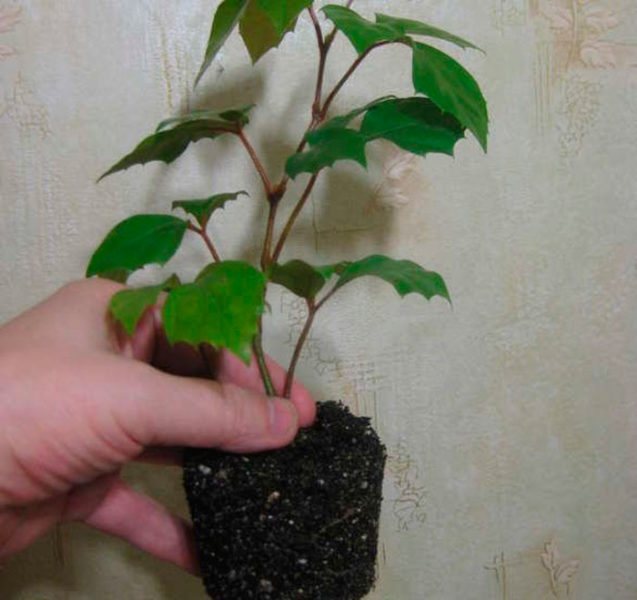

Transfer by transshipment method
How to care for cissus at home


Cissus flower home care photo
The plant is quite unpretentious to care for.
Lighting
Lighting should be diffused, without direct sunlight. An ideal place would be windows of east and west orientation, you can place them in the back of the room on interior items - the cissus will adapt to such conditions. The south window will require shading. It can grow under fully artificial light, but the duration of daylight hours should be at least 16 hours.
Air temperature and ventilation
Cissus can withstand a temperature range of 10-25 ° C, even a short-term drop to + 5 ° C is possible. Variegated species are thermophilic: they require a temperature range of 18-25 ° C.
In summer, move the plant to fresh air (balcony, veranda, terrace, backyard). If this is not possible, ventilate the room more often. Protect from cold air currents, otherwise the vine will shed its leaves.
Watering and humidity
Water like most houseplants: more abundantly in summer and moderately in winter. Water as the earthen coma dries up. In the summer, it should dry out by half, in the winter - by 2/3.
Lush greenery intensively absorbs and evaporates moisture, the air in the room should not be dry. Spray the plant daily, place an aquarium or any container of water nearby. Periodically place the liana pot on a tray with damp expanded clay, moss, pebbles. Bathing under a warm shower has a beneficial effect on the condition of the plant. Place away from heating systems during winter.
Trimming and pinching
To limit the growth of vines, it is necessary to prune and pinch the tips of the shoots. Old, long shoots begin to bare: shorten them by 2/3. Usually pruning is done in the spring.
Top dressing
In spring and summer, apply complex mineral fertilizers for decorative foliage plants every two weeks. In winter, the plant slows down all processes, so there is no need to feed it in the cold period.
Description of the plant
Cissus in room culture have been popular for many, many years, despite the large number of bright competitors. And it is not at all accidental. Finding another plant that is so lush and stably decorative, while unpretentious in care, is almost impossible. Cissus is popularly called "birches" or "home grapes".
These are unique evergreen climbing plants with very thin and flexible, actively branching shoots up to 2 m, clinging to any supports thanks to the antennae. Fast growth is no less a virtue of cissus than dark, beautiful leaves. True, the rate of development of a plant, like the density of foliage, directly depends on the care and the number of "misses".
Simple, three-, five- or seven-lobed, alternate leaves of cissus can be oval-pointed or diamond-shaped. The reverse side is light, in some species it is purple.
Blooming comant cissus is rare. And false umbrellas with pale four-petal flowers are difficult to notice in the mass of leaves.


Cissus (Cissus) in the room culture has been popular for many, many years, despite the large number of bright competitors. <>
Diseases, pests, other difficulties
Diseases
Interveinal chlorosis - a disease that occurs due to a lack of nutrients. The leaves turn yellow between the veins. It is necessary to apply an iron fertilizer or a complex of mineral fertilizers in half the dosage recommended by the manufacturer.
Leaves and stems turn black, leaves become stained, fall off - this is how root rot manifests itself, provoked by waterlogging of the soil. It is necessary to carry out an emergency plant transplant, cutting off all damaged roots. After transplanting, the plant is sprayed and watered with a phytosporin solution.
Possible pests:
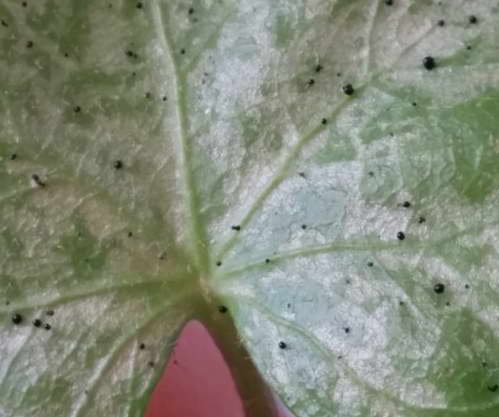

Cissus pests photo
- Mealybug (round insects, covered with a whitish bloom).
- Scale (insects with brownish shells).
Mealybug and scale insects are located on the leaves of the plant. First, remove them mechanically: moisten a cotton pad with soapy water and wipe the leaves. Then apply an insecticide treatment.
- Podura (small white insects located on the surface of waterlogged soil).
- Spider mite. It is necessary to carry out preventive treatments with aktara every two weeks if you notice pests in your apartment. Their presence is manifested by yellowing and drying of the leaves, and a barely noticeable cobweb is visible on the reverse side.
It is necessary to carry out an insecticide treatment. Adjust watering.
Why Cissus leaves dry and fall off
- The sheet plates curl, dry, fall off - the air temperature is too high. Move to a cool area or spray more frequently.
- The stems are lignified, the plant has stopped growing - the root system has completely filled the pot, it's time to transplant.
- If young plants grow slowly, the container is most likely too bulky.
- Leaves become shallow, fall off from excessive watering or high humidity.
- From a lack of moisture, the lower leaves will begin to become covered with yellow spots, and eventually fall off.
- The leaves are curled, covered with a gray bloom or brown spots - the soil is waterlogged.
- Growth rates are slowing down due to lack of nutrients.
- From too intense lighting, the color of the leaves becomes pale.
- The leaves are covered with brownish spots from a lack of phosphorus and nitrogen.
- The leaves become smaller, their shape is curved, black spots appear - there is not enough phosphorus.
Problems
Sometimes, with mistakes in leaving, cissus can grow poorly, and its leaves dry out and fall off. What should you pay special attention to when caring for cissus?
- The plant does not like cold drafts and a sharp drop in temperature. At the same time, its leaves will dry out and fall off;
- Very dry air is harmful to the plant. With a lack of moisture in the air, the tips of the leaves begin to dry out. If the plant is constantly in dry air, then its leaves become smaller;
- Over-spraying and regularly getting water on the plant also degrades its appearance. Its leaves curl, and sometimes they can become moldy and start to rot;
- If the bush has not been transplanted and fed for a long time, its growth slows down. Grapes require regular application of nutrients to the soil.
Types and varieties of cissus with photos and names
There are about 350 species of cissus, but only a few are cultivated with bred varieties.
Cissus rhombic or rhombic Cissus rhombifolia
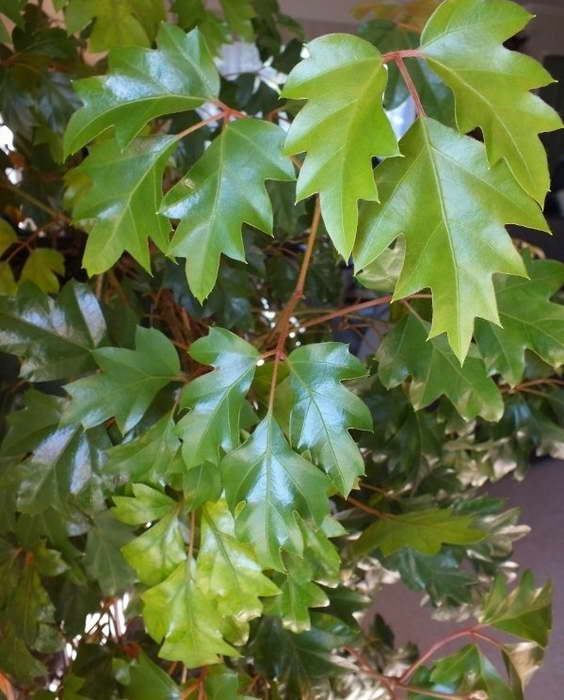

Cissus rhombic or rhombic Cissus rhombifolia cultivar Helen Danica Ellen Danica photo
The name is given due to the shape of the leaf plates. Shoots are long, flexible, curly, green in color, pubescent with a brownish pile. Leaves are glossy, dark green in color. This species grows very quickly, the shoots are attached to the support with the help of antennae.
Varieties:
- Ellen Danica - dissected leaf plates;
- Fionia - carved leaf plates.
Cissus mandiana Cissus mandaiana


Cissus mandiana Cissus mandaiana photo
A variety of rhomboid cissus with dense leathery leaves with a glossy sheen and red-brown shoots covered with short villi. Differs in a larger size of leaf plates, the plant is resistant to temperature extremes.
Cissus antarctic or liana kangaroo Cissus antarctica


Cissus antarctic or liana kangaroo Cissus antarctica photo
Oval-shaped leaf plates with jagged edges, painted green, reach a length of 12 cm.
Cissus multicolored Cissus discolor
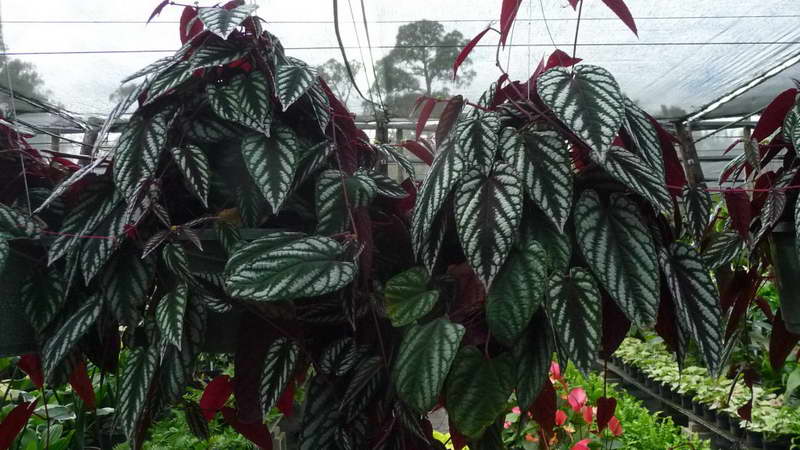

Cissus multicolored Cissus discolor photo
The leaves are oblong, whole, the surface is colored dark green with silvery spots, the reverse side of the leaf is lilac-red.
The following species are rare, mostly seen in botanical gardens.
Cissus quadrangular Cissus quadrangularis
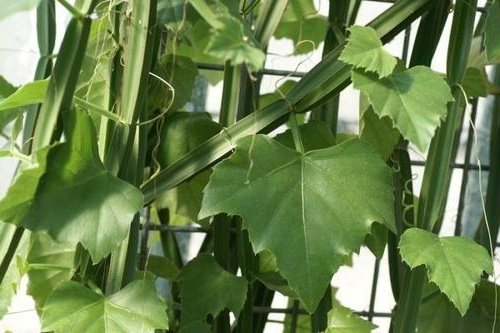

Cissus quadrangular Cissus quadrangularis photo
It has thick tetrahedral shoots with a diameter of about 1 cm.The leaves are small, oval, fall off quickly.
Cissus cactus Cissus cactiformis
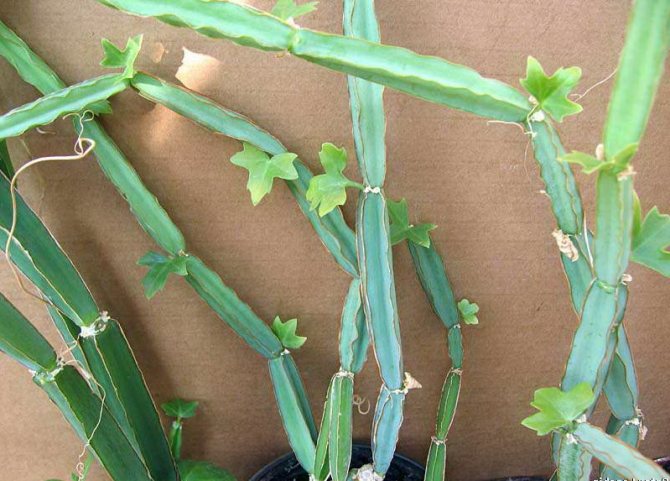

Cissus cactus Cissus cactiformis photo
It has articulated tetrahedral stems. Leaves are few, small.
Cissus round-leaved Cissus rotundifolia
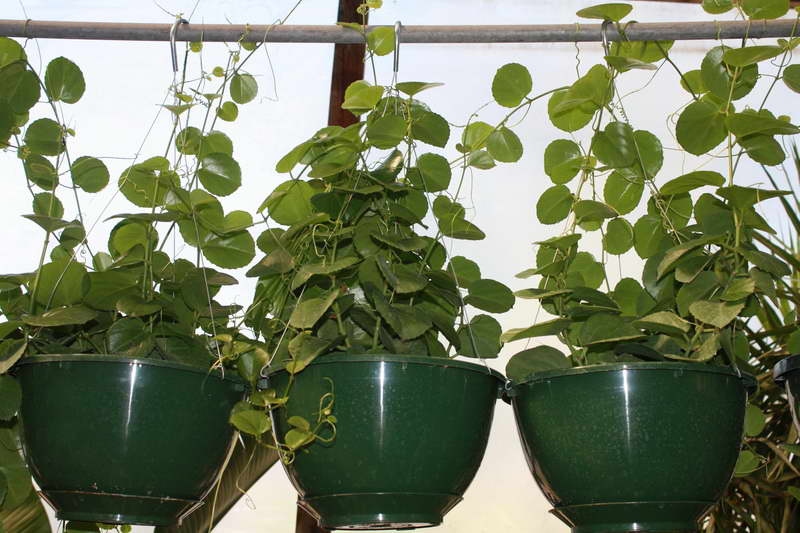

Cissus round-leaved Cissus rotundifolia photo
Liana with tough stems. The leaf plates are rounded with jagged edges, have a green-gray color, their surface is covered with a waxy bloom.
Cissus glandular cissus adenopoda
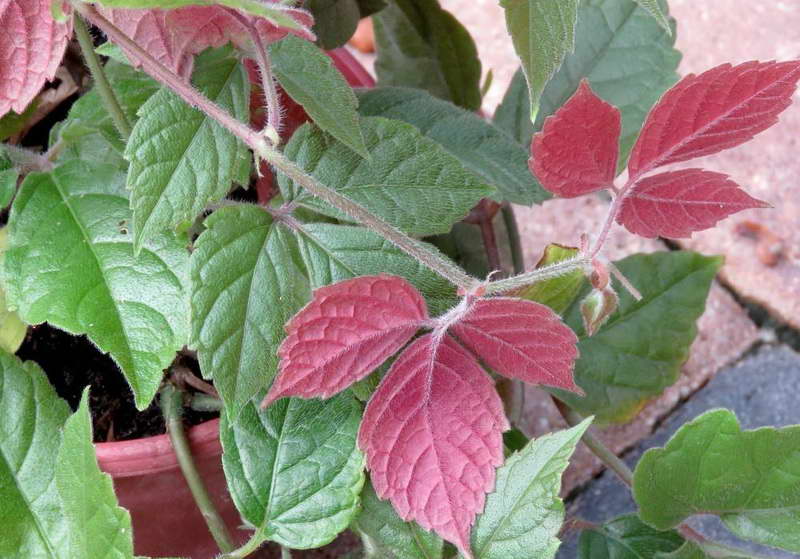

Cissus glandular cissus adenopoda photo
Fast-growing liana-like plant. The leaf plates are divided into 3 lobes, strongly pubescent, the surface has an olive tint, the reverse side is burgundy.
Cissus striata Cissus striata
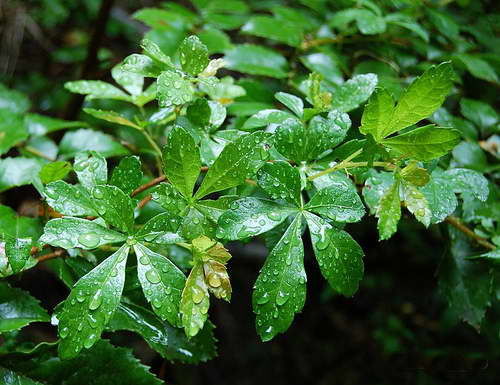

Cissus striata Cissus striata photo
A beautiful vine with three-toed or five-toed bright green leaves and reddish-brown shoots. The leaves are miniature, the liana itself grows up to 10 m in length. The name is obtained due to the pronounced veins, which line the leaf plates in stripes.
More about the flower
The cissus plant is a perennial plant that can either be evergreen or shed its foliage. Shoot stems are flexible and can reach a length of up to 3 m. Over time, a rough bark appears on the stems at the base, which then begins to flake off. Long shoots are covered with leaves and tendrils. Thanks to the latter, the vine easily clings to supports and surfaces.
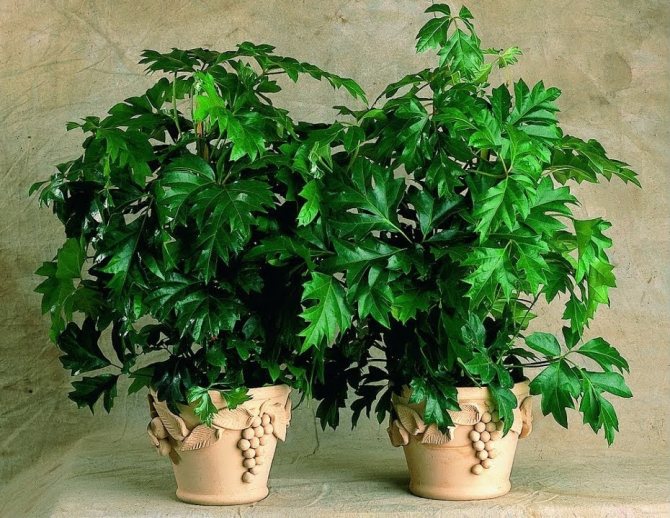

Wide leaves have a dissection in the middle, the surface of the plate is glossy. Indoors, it blooms quite rarely, even when the culture is properly cared for. Cissus has small green flowers, collected in bunches of small inflorescences. After pollination of flowers, red or black berries appear, inside of which seeds are formed.
The plant is hardy, unpretentious, and caring for cissus is not a problem. It adapts quickly to any environment and environment. This attracts novice florists. These plants are often found in hospitals, preschool and school settings and offices.
Useful properties, signs and superstitions about cissus
The plant is able to purify indoor air, providing antibacterial and antifungal effects.
Some believe that the energy of the plant drives men out of the house. Other feng shui experts argue that placing a plant in the house helps to increase vitality and relieves fatigue.
Traditional medicine cissus quadrangular is used as an anesthetic and tonic for the regeneration of bone tissue, tendons, cartilage. Contraindications for use are individual intolerance, childhood, pregnancy and lactation.


